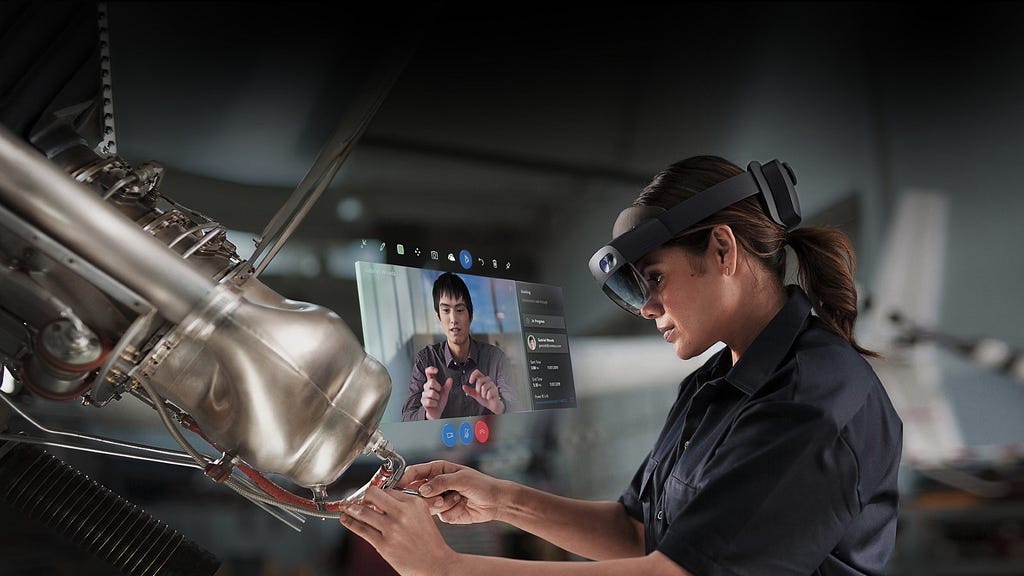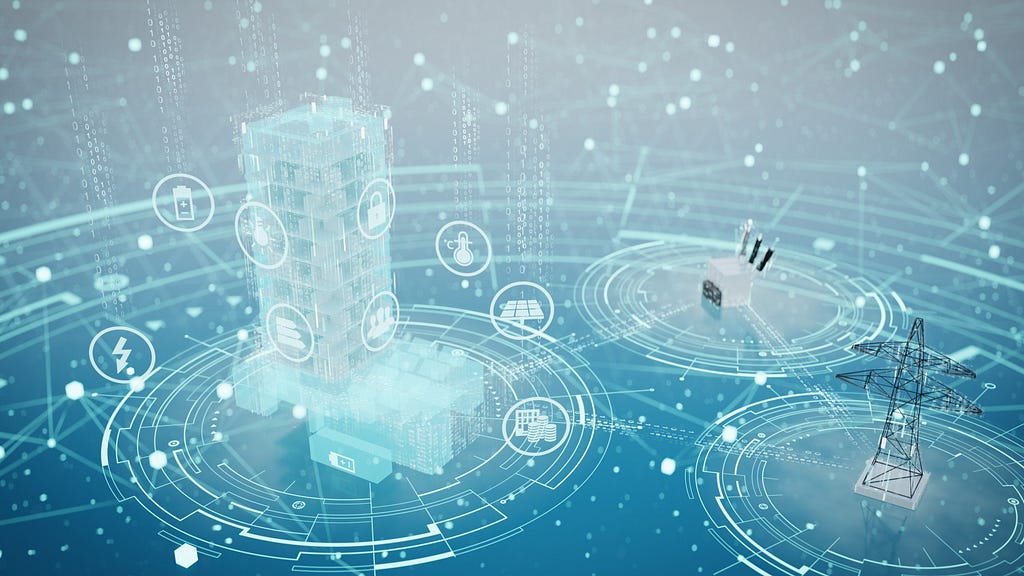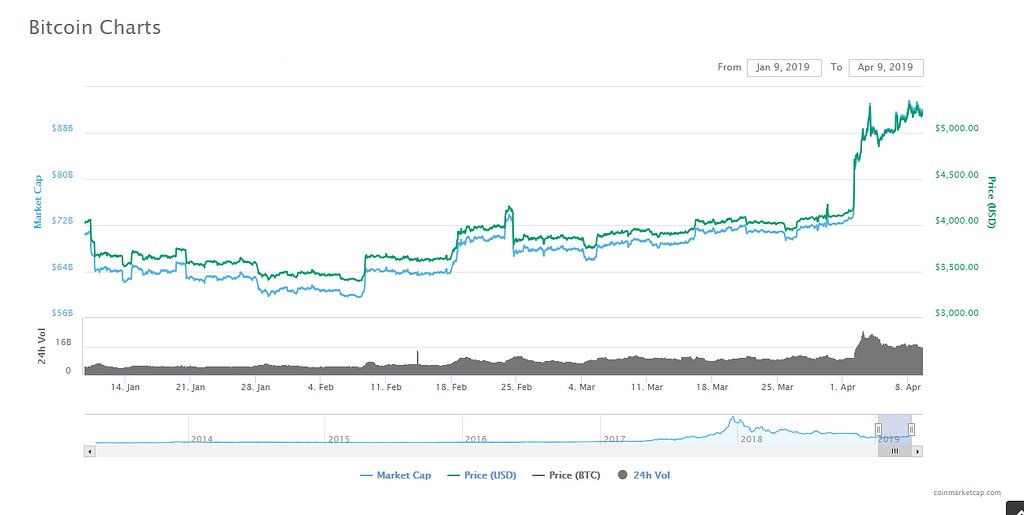Latest news about Bitcoin and all cryptocurrencies. Your daily crypto news habit.

We have arguably seen a great level of creative diversity and institutional support over the last half-decade with regards to emerging and disruptive technologies, compared to the five years before.
Here are a few of the most important & disruptive trends in emerging technology as of publication.
#5: The Virtual Alternatives To Reality
Alternative Reality and Virtual Reality are two fantastic ideas that were conceived by 20th-century science fiction writers, yet have only become commercially viable over the past decade.
AR & VR are expected to grow by $20.4 billion worldwide revenue for 2019.
Interactive entertainment has been, and is currently, being produced on a commercial scale for pioneering VR devices such as the HTC Vive and Oculus Rift (the latter company being acquired by Facebook in 2014). These range from immersive video-games and movies, to experimental ‘experiences’.
Conversely, the Microsoft HoloLens profits from a business-to-business sales model, providing an alternative reality headpiece which is proudly marketed as ‘Mixed Reality Technology for Business’.
Use cases include interactive, three-dimensional representations of key business visuals such as building architecture, the creation of 3D art, and point-of-sale presentations.
#4: Internet of Things, From the City to the Home
IoT stands for ‘Internet of Things’ and denotes technology solutions pair advanced algorithms with data from inter-connected devices, to facilitate efficiency & analytic improvements.
A 2017 report from Gartner forecasted that there will be over 20 billion interconnected devices by the end of 2020.
By comparison, similar research from Ericsson conducted predicted 29 billion devices by 2022.
A prime business use-case is industrial manufacturing. Across the supply chain, technological convergence is contributing to what many are calling the fourth industrial revolution.
This term denotes a stage of advancement in cross-communication between machines and computers, enabling a combination of of process and decision-making automation on a scale never before seen.
One key example can be seen in the controversial, yet successful Amazon Alexa.
Governments are on the bandwagon too, with many metropolitan areas in developed countries announcing and commencing ‘smart-city’ initiatives. Key examples of governments heavily investing in this sector can be found in Northeastern and South Pacific Asia.
Smart city solutions seek to apply data-driven decision making & automation technology to improve the lives of citizens.
#3, 2: Machine and Deep Learning (AI)
‘Machine’ and ‘deep’ learning are two subsets of computing & data science development within the field of artificial intelligence’ (aka AI). I have decided to put them together on this list because of their uniquely close relationship.
Their purpose is to make decisions based off of an incremental database of previously input data — as well as data resulting from the consequences of prior decisions.
According to professional research organization Statista, the global AI market overall will see annual growth of 154% by the year’s end.
In a world of big data, the applications of these learning solutions require large distributed computer networks as they are power-intensive computing processes.
Machine learning does not always require distributed computing networks, whilst deep learning specifically uses multiple layers of artificial neural networks. Neural networks are computers which are built with the intent of recreating the decision-making process of the human brain.
Self-learning decentralized computer networks are essential for smart city and IoT projects.
Additionally, machine and deep learning systems are seen running the back-end of many consumer services such as those offered by Netflix and Google.
The high associated costs make it most probitive for all-but enterprise users.
#1: Blockchain & Distributed Ledger Technology
Blockchain refers (or at least it did originally) to a decentralized peer-to-peer network used for the digital transfer of information and financial assets — immutably stored on a decentralized ‘ledger’.
It may be an oversaturated buzzword in the tech community, however, this year has seen massive developmental shifts — after the previous year that was filled with bad news.
More recently blockchain has become more of a catch-all term used to describe all transactional networks built on distributed-ledger-technology, both centralized and decentralized iterations.
This definition is likely to remain for a long time to come with this year seeing huge, surprising announcements from technology kingpins.
One such ‘kingpin’ is IBM, having recently announced partnerships with several international banks to utilize its stellar-blockchain based solution (IBM World Wire) for cross-border payments.
Jack Dorsey of Twitter and Square fame has also invested both personally and professionally — with the launch of ‘Square Crypto’.
My name is Rafal Szymanski. I am an entrepreneur from Ukraine, and my expertise comes from ownership of several startups across the IT field.
Currently, I’m the CEO at Global Tech Makers Company, a leading tech firm which develops of IT products to make users’ lives even better and easier.
Top Five Trends In Emerging Technology Right Now was originally published in Hacker Noon on Medium, where people are continuing the conversation by highlighting and responding to this story.
Disclaimer
The views and opinions expressed in this article are solely those of the authors and do not reflect the views of Bitcoin Insider. Every investment and trading move involves risk - this is especially true for cryptocurrencies given their volatility. We strongly advise our readers to conduct their own research when making a decision.



